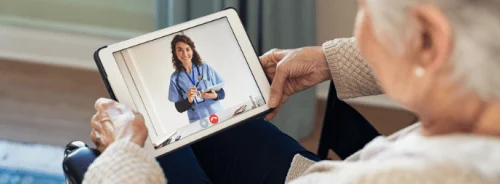The COVID-19 pandemic has catalysed a significant shift in healthcare delivery, prompting institutions like Geisinger, based in Danville, Pennsylvania, to innovate rapidly. Geisinger responded to the surge in demand for behavioral health services by leveraging telemedicine, particularly crucial for their predominantly rural patient population. However, while telemedicine expanded access, it also unveiled challenges related to pre-visit readiness.
Streamlining Telemedicine: Geisinger's Integration Journey
Benjamin C. Gonzales, operations manager of virtual care at Geisinger, highlighted the critical issue: telemedicine visits lacked integration into their patient portal, MyChart. This absence hindered the completion of pre-visit requirements such as signing consents and health questionnaires, impacting compliance and patient readiness. To address these challenges, Geisinger embarked on a comprehensive solution. By integrating telemedicine launches into MyChart, patients were presented with pre-visit requirements seamlessly. Gonzales emphasised the importance of streamlining this process to maintain compliance, ensure pre-visit readiness, and replicate the in-person encounter experience virtually.
Collaboration between digital engagement and telemedicine
Through collaboration between Geisinger's digital engagement and telemedicine teams, a structured approach was developed. The integration encompassed essential elements such as document e-signatures, health questionnaires, co-pay collection, and insurance verification, culminating in a patient-centric pre-visit experience. The results of this integration were striking. Over 50,000 patients engaged in video visits via MyChart within the pilot's initial five months, with an impressive 88% completion rate. Notably, the percentage of patients completing e-signatures of required documents surged from 66% to an outstanding 96%, greatly simplifying compliance efforts.
Patient Experience and Financial Success
Furthermore, 81% of patients completed all components of e-Check In, marking a significant improvement from the pilot's outset. This encompassed various tasks, including demographic updates and insurance verification, demonstrating the effectiveness of the integrated approach. Geisinger's success extended beyond immediate benefits, with 94% of patients activating MyChart accounts, a notable increase from the pilot's onset. This not only enhanced patient engagement but also generated substantial cost savings, estimated at over $560,000, primarily through reduced administrative burdens and improved appointment attendance rates.
Insightful Recommendations from Experience
Reflecting on their journey, Gonzales offered valuable advice for organisations considering similar integrations. He emphasised the importance of thoughtful consideration regarding the inclusion and necessity of pre-visit components, cautioning against overburdening patients and potentially causing dissatisfaction. Additionally, ensuring robust support structures for patients and providers navigating the patient portal was deemed essential for seamless adoption.
Geisinger's innovative approach underscores the transformative power of integrating telemedicine within patient portals. By enhancing efficiency, compliance, and patient engagement, such initiatives pave the way for a more accessible and patient-centric healthcare landscape. As healthcare continues to evolve, Geisinger's experience serves as a compelling blueprint for organisations seeking to leverage technology effectively to meet the evolving needs of patients and providers alike.
Source Credit: HealthCare IT News
Image Credit: iStock






